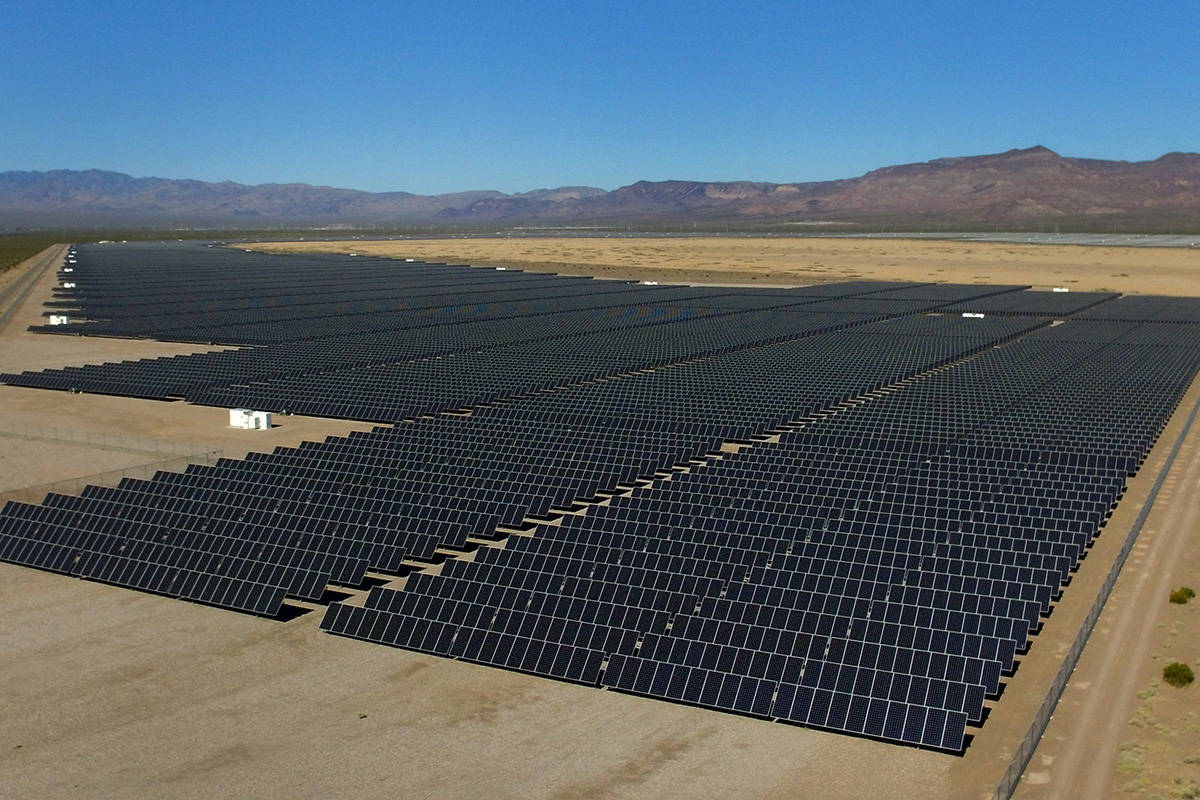BLM moves forward on Green Link West project
The BLM state office is the lead on the proposed project and is currently collecting data, forming alternatives, and “working through other needs,” said Chris Rose public affairs specialist at BLM Nevada State Office.
At the March meeting, Public Utilities Commission of Nevada approved more than 600 miles of transmission lines, and officials say it will help the state to meet a 50-percent emissions-free output by 2030 and net-zero emissions by 2050.
The proposed project will have two sets of workshops - one that took place between June 21 -24 and the other in November, Rose said.
The Green Link West Project is a large-scale project that will require an Environmental Impact Statement (EIS), and possibly a resource plan amendment, Rose said in an email.
“The process for approval is the same with regards to NEPA. The only difference between this project and a solar project is that Green Link West is a linear right of way since it is a power line and solar projects are site rights of way that involve a single location,” he said.
The project is the pre-NEPA phase, which means BLM collects information like seasonal studies, identifies environmental and social justice needs, and conducts public and tribal outreach to familiarize people with the project and provide information that can be used by the public/tribes in development of their comments submitted during the NEPA comment periods, Rose said.
After the BLM completes the NEPA process, the PUCN will use the information in the EIS in their Utility Environmental Protection Act (UEPA) process when they make the decision to approve the project.
“At this time, the Project is almost a year away from the Notice of Intent (NOI) that starts the NEPA process,” Rose said.
On June 3, 2019, the State of Nevada enacted Senate Bill 254 directing the Department of Conservation and Natural Resources to issue a report that includes a statewide inventory of greenhouse gas emissions in the state; a projection of annual greenhouse gas emissions in the state for the 20 years immediately following the date of the report; and a statement of policies and regulations that could achieve reductions in projected greenhouse gas emissions by electric production sectors that would be required to achieve a statewide reduction of net greenhouse gas emissions of 28 percent, 45 percent and nearly 100 percent by the years 2025, 2030 and 2050 respectively as compared to the level of greenhouse gas emissions in the state in 2005.
“Development of the Greenlink West Transmission Project facilitates access to renewable energy zones and is necessary to accommodate decommissioning of conventional fossil fuel generation,” Rose said.
But not everyone agrees. Basin and Range Watch, a Nevada-based non-profit that advocates for conservation of deserts in Nevada and California criticized the proposed project that would cut through the undeveloped parts of Nevada.
“The Green Link West transmission line will create several industrial sacrifice zones in remote Nevada and enable the loss of several thousand acres of valuable wildlife habitat, cultural sites, recreational areas near national parks and Joshua tree habitat on Nevada’s public lands,” said Kevin Emmerich, a co-founder of Basin and Range Watch in an email statement.
“Large-scale solar projects have a huge construction carbon footprint and only create an average of 10 full time jobs per project. Utilizing old mine sites and rooftops for green energy is the alternative that makes the most sense for such a destructive transmission project proposal,” Emmerich said.
State officials praised the project as they said it would help the state to achieve its climate action plan, decarbonize the grid and create jobs.
“Impacts to habitats and the environment will be identified and addressed as part of the NEPA process and development of the environmental impact statement,” Rose said.
The transmission initiative will be made up of:
Greenlink West - a 525 kV line that spans approximately 350 miles from Las Vegas to Yerington
Greenlink North - a 525 kV line that spans approximately 235 miles from Ely to Yerington
Greenlink Nevada will also include three 345 kV lines from Yerington to the Reno area.

















